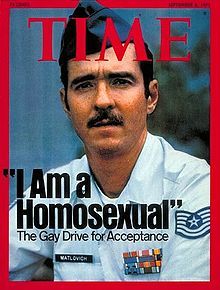“Punting the Pundits” is an Open Thread. It is a selection of editorials and opinions from around the news medium and the internet blogs. The intent is to provide a forum for your reactions and opinions, not just to the opinions presented, but to what ever you find important.
Thanks to ek hornbeck, click on the link and you can access all the past “Punting the Pundits”.
Follow us on Twitter @StarsHollowGzt
Paul Krugman: Plutocrats Against Democracy
It’s always good when leaders tell the truth, especially if that wasn’t their intention. So we should be grateful to Leung Chun-ying, the Beijing-backed leader of Hong Kong, for blurting out the real reason pro-democracy demonstrators can’t get what they want: With open voting, “You would be talking to half of the people in Hong Kong who earn less than $1,800 a month. Then you would end up with that kind of politics and policies” – policies, presumably, that would make the rich less rich and provide more aid to those with lower incomes.
So Mr. Leung is worried about the 50 percent of Hong Kong’s population that, he believes, would vote for bad policies because they don’t make enough money. This may sound like the 47 percent of Americans who Mitt Romney said would vote against him because they don’t pay income taxes and, therefore, don’t take responsibility for themselves, or the 60 percent that Representative Paul Ryan argued pose a danger because they are “takers,” getting more from the government than they pay in. Indeed, these are all basically the same thing.
New York Times Editorial Board: Beyond Screening for Ebola
The new monitoring rules to be placed on travelers coming into the United States from three Ebola-affected countries in West Africa form a smart and workable response to a complex public health question. The measures should be more effective than a misguided ban on all travelers from Guinea, Liberia and Sierra Leone, which many in Congress have been demanding. [..]
The new measures surely make unnecessary a harmful ban on all travelers who have been in the three countries. Federal health officials say most travelers returning from those countries are either American citizens or longtime legal residents. They include volunteers who have been battling the epidemic, journalists and federal health experts, among others. Dr. Thomas Frieden, director of the Centers for Disease Control and Prevention, who visited West Africa recently, would presumably have been prevented from returning if there had been a travel ban.
A ban would discourage volunteers from joining the fight against Ebola and make it harder to bring the epidemic under control, the surest way to protect this country from imported cases.
The United States now has an Ebola czar. But what about a surgeon general? The gun lobby has successfully shot down his nomination-at least so far.
The Ebola epidemic is a global health crisis that demands a concerted, global response. Here in the United States, action has been disjointed, seemingly driven by fear rather than science. One clear reason for this: The nomination of President Barack Obama’s choice to fill the public health position of surgeon general, Dr. Vivek Murthy, is languishing in the Senate. You would think that an Ebola epidemic would move people to transcend partisan politics. But Vivek Murthy, despite his impressive medical credentials, made one crucial mistake before being nominated: He said that guns are a public health problem. That provoked the National Rifle Association to oppose him, which is all it takes to stop progress in the U.S. Senate.
Michelle Goldberg: The Women’s Equality Party Is a Joke
According to the website of New York’s nascent Women’s Equality Party, the organization was “[i]nspired by the spirit of Seneca Falls and those who came before us” and “brings together the strength of New York’s women leaders to help elect candidates who support the issues that matter most to us.” In actual fact, however, the Women’s Equality Party, which was founded by New York Governor Andrew Cuomo in July, seems inspired by nothing so much as his desire to undermine the progressive Working Families Party. Cuomo’s attempt to hijack feminism for his own petty ends is such a craven move it could have been dreamed up by the scriptwriters at VEEP. It would be bleakly funny if it didn’t pose an actual danger to an organization that has always fought for New York’s women.
One of the great ironies here is that Cuomo’s feud with the Working Families Party stems, in part, from his refusal to do enough for women in New York, despite his staunch support for reproductive rights. Like many on the left, the WFP, a coalition of unions, activists and community organizers, was incensed by Cuomo’s tacit support of a weird alliance in the New York State Senate, in which the Republican minority teamed up with a small faction of breakaway Democrats to wrest control from the Democratic majority. That’s a big reason why Cuomo’s vaunted Women’s Equality Agenda, a 2013 legislative package that’s now a centerpiece of his campaign, never went anywhere.
Zoë Carpenter : The Stealth Campaign to Buy America’s Courts
Cole County, Missouri, seems an unlikely place for a national Republican group to spend hundreds of thousands of dollars. It’s a small county of 75,000, and its leadership is solidly red, with few exceptions. One of those exceptions is Pat Joyce, a Democrat who’s held her seat on the country circuit court for two decades. Until a few weeks ago, with $17,000 on hand and her opponent nearly $13,000 in debt, her chances of serving another term seemed good.
That financial advantage vanished abruptly in mid-October when the Republican State Leadership Committee stepped in with $200,000 to save Republican Brian Stumpe. Half of that money went directly to his campaign. The rest went to the RSLC’s local political action committee, which ran a tie-dye hued ad that accused Joyce of being a “groovy” ally of “radical environmentalists.”
Joyce holds a powerful seat, as far as local courts go. Cole County includes the Missouri state capitol, and so the court has jurisdiction over lawsuits against the state, such as legal challenges to ballot measures. But the RSLC’s involvement in the race isn’t necessarily about Joyce-it’s part of a broader campaign to make courts across the country more conservative.
John Nichols: Chris Christie’s Latest Terrible Idea: Let GOP Governors Control Voting for 2016
As the chairman of the Republican Governors Association and the self-appointed surrogate-in-chief for the Grand Old Party’s candidates for the top jobs in states across the country this fall, Chris Christie has plenty of reasons to want embattled governors like Florida’s Rick Scott and Wisconsin’s Scott Walker to be re-elected.
Yes, yes, Christie wants to elect governors who will stop all this talk about raising the minimum wage. Yes, yes, Christie wants to elect governors who will “start offending people”-like school teachers and their unions.
But that’s not all the New Jersey governor wants from his fellow Republican executives. Among the reasons he mentions for electing Republican governors, says Christie, is a desire to put the GOP in charge of the “voting mechanism” of likely 2016 presidential battleground states such as Florida and Wisconsin and Ohio..


 Desiring to secure her later years financially, she decided she would be the
Desiring to secure her later years financially, she decided she would be the  According to the official records of the Army Graves Registration Service deposited in the U.S. National Archives in Washington, four bodies were transported to Chalons from the cemeteries of Aisne-Marne, Somme, Meuse-Argonne and Saint-Mihiel. All were great battlegrounds, and the latter two regions were the sites of two offensive operations in which American troops took a leading role in the decisive summer and fall of 1918. As the service records stated, the identity of the bodies was completely unknown: “The original records showing the internment of these bodies were searched and the four bodies selected represented the remains of soldiers of which there was absolutely no indication as to name, rank, organization or date of death.”
According to the official records of the Army Graves Registration Service deposited in the U.S. National Archives in Washington, four bodies were transported to Chalons from the cemeteries of Aisne-Marne, Somme, Meuse-Argonne and Saint-Mihiel. All were great battlegrounds, and the latter two regions were the sites of two offensive operations in which American troops took a leading role in the decisive summer and fall of 1918. As the service records stated, the identity of the bodies was completely unknown: “The original records showing the internment of these bodies were searched and the four bodies selected represented the remains of soldiers of which there was absolutely no indication as to name, rank, organization or date of death.” Bearing the inscription “An Unknown American who gave his life in the World War,” the chosen casket traveled to Paris and then to Le Havre, France, where it would board the cruiser Olympia for the voyage across the Atlantic. Once back in the United States, the Unknown Soldier was buried in Arlington National Cemetery, near Washington, D.C.
Bearing the inscription “An Unknown American who gave his life in the World War,” the chosen casket traveled to Paris and then to Le Havre, France, where it would board the cruiser Olympia for the voyage across the Atlantic. Once back in the United States, the Unknown Soldier was buried in Arlington National Cemetery, near Washington, D.C.
 On June 22, 1988, less than a month before his 45th birthday, Matlovich died of complications from HIV/AIDS beneath a large photo of Martin Luther King, Jr. His tombstone, meant to be a memorial to all gay veterans, does not bear his name. It reads, “When I was in the military, they gave me a medal for killing two men and a discharge for loving one.” Matlovich’s tombstone at Congressional Cemetery is on the same row as that of FBI Director
On June 22, 1988, less than a month before his 45th birthday, Matlovich died of complications from HIV/AIDS beneath a large photo of Martin Luther King, Jr. His tombstone, meant to be a memorial to all gay veterans, does not bear his name. It reads, “When I was in the military, they gave me a medal for killing two men and a discharge for loving one.” Matlovich’s tombstone at Congressional Cemetery is on the same row as that of FBI Director 
 In 1939, the Guggenheim Foundation’s first museum, “The Museum of Non-Objective Painting”, opened in rented quarters at 24 East Fifty-Fourth Street in New York and showcased art by early modernists such as
In 1939, the Guggenheim Foundation’s first museum, “The Museum of Non-Objective Painting”, opened in rented quarters at 24 East Fifty-Fourth Street in New York and showcased art by early modernists such as  Internally, the viewing gallery forms a gentle helical spiral from the main level up to the top of the building. Paintings are displayed along the walls of the spiral and also in exhibition space found at annex levels along the way.
Internally, the viewing gallery forms a gentle helical spiral from the main level up to the top of the building. Paintings are displayed along the walls of the spiral and also in exhibition space found at annex levels along the way.
Recent Comments